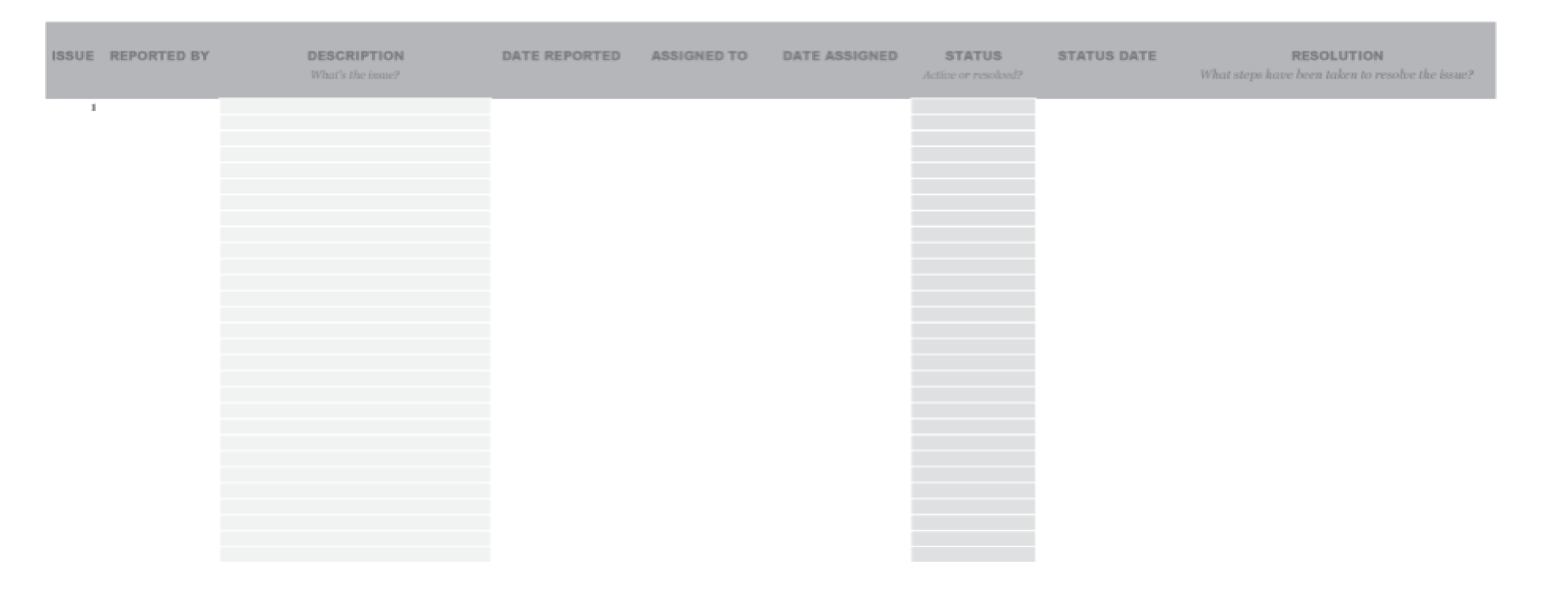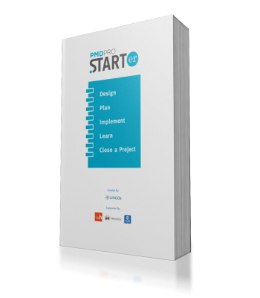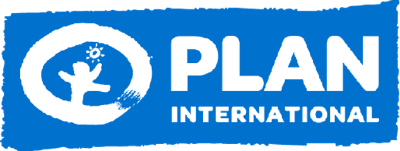Issue Log
I want to implement a project...
by identifying, tracking and resolving issues
LEVEL OF INVOLVEMENT: MEDIUM
You will use this tool regularly in team meetings and 1:1s to ensure that issues that arise are dealt with appropriately.
You will use this tool regularly in team meetings and 1:1s to ensure that issues that arise are dealt with appropriately.
Implement a project by identifying, tracking and resolving issues

WHAT is it?
Even the most thoughtful plans come up against issues that challenge projects during implementation. It is important to learn how to manage these, to track and monitor how issues are solved, and to adapt your plan so that it reflects the most recent reality.
Issue Logs vary from paper checklists to online databases, depending on the size of the project. They are easy to complete and at a minimum include 1) a reference number, 2) the name of the person reporting the issue, 3) a description of the issue, 4) the date it was reported, 5) the name of the person assigned to deal with it, and 6) a status and resolution column.
Issue Logs vary from paper checklists to online databases, depending on the size of the project. They are easy to complete and at a minimum include 1) a reference number, 2) the name of the person reporting the issue, 3) a description of the issue, 4) the date it was reported, 5) the name of the person assigned to deal with it, and 6) a status and resolution column.
HOW do I use it?
Teamwork: Using this tool enables you to create an environment in which your team is accountable for carrying out actions to ensure that issues are resolved in a timely and effective manner.
This is best achieved by encouraging team members to resolve issues themselves, consulting you as required. There may be times when you need to escalate an issue to a higher level to achieve a solution. It’s important to remember that while issue management is a collaborative effort, you are ultimately accountable for ensuring that all of the issues that arise are dealt with appropriately.
One of the UNITAS project teams has come up against a cement supply problem that could make it difficult for a latrine block to be built. Amira, the project manager, records this in her Issue Log and assigns another team member to find a solution. By the next team meeting, a new supplier has been found, and while costs are the same, the cement will take longer to deliver. This is a prompt for Amira to look at whether this issue will affect the critical path on her Gantt Chart.
As the person accountable, you will develop the skills to analyze and consider the consequences of the solutions that you employ, and will understand how to communicate and share this information with others.
This is best achieved by encouraging team members to resolve issues themselves, consulting you as required. There may be times when you need to escalate an issue to a higher level to achieve a solution. It’s important to remember that while issue management is a collaborative effort, you are ultimately accountable for ensuring that all of the issues that arise are dealt with appropriately.
One of the UNITAS project teams has come up against a cement supply problem that could make it difficult for a latrine block to be built. Amira, the project manager, records this in her Issue Log and assigns another team member to find a solution. By the next team meeting, a new supplier has been found, and while costs are the same, the cement will take longer to deliver. This is a prompt for Amira to look at whether this issue will affect the critical path on her Gantt Chart.
As the person accountable, you will develop the skills to analyze and consider the consequences of the solutions that you employ, and will understand how to communicate and share this information with others.
WHEN do I use it?
All project managers will encounter situations that could be problematic if they aren’t tackled in the right way. If issues are unresolved, this can lead to slipping timelines and budget overspends, a decline in project quality, and a reputational risk to your organization.
You and your teams will log issues for the duration of a project, recording and tracking anything that comes up until the point of resolution. Issues should be dated and logged as they arise, and team meetings are a good place to monitor and ensure that progress is achieved.
Who is involved?
You are accountable for establishing a team culture in which Issue Logs are seen as the means of mitigating risks to your project.
Tips:
A quick glance at an Issue Log for a project will indicate problems encountered in the past so that they can be avoided in the future.
Additional Resources
Download the additional resources and the Project DPro (PMD Pro) Pocket Guide

Supported & Developed by:
Shared by:
Users are free to copy/redistribute and adapt/transform
for non-commercial purposes.
© 2022 All rights reserved.




